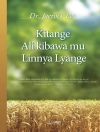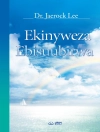Elie Wiesel, winner of the Nobel Peace Prize, studies four different rebbes in eighteenth-century Eastern Europe, delving into their lives, their work, and their impact on the Hasidic movement and beyond.
In Four Hasidic Masters and Their Struggle against Melancholy, Jewish author, philosopher, and humanist Elie Wiesel presents the stories of four Hasidic masters, framing their biographies in the context of his own life, with direct attention to their premonitions of the tragedy of the Holocaust. These four leaders—Rebbe Pinhas of Koretz, Rebbe Barukh of Medzebozh, the Holy Seer of Lublin, and Rebbe Naphtali of Ropshitz—are each charismatic and important figures in Eastern European Hasidism. Through careful study and consideration, Wiesel shows how each of these men were human, fallible, and susceptible to anger, melancholy, and despair. We are invited to truly understand their work both as religious figures studying and pursuing the divine and as humans trying their best to survive in a world rampant with pain and suffering.
This new edition of Four Hasidic Masters, originally published in 1978, includes a new text design, cover, the original foreword by Theodore M. Hesburgh, C.S.C., and a new introduction by Rabbi Irving Greenberg, introducing Wiesel’s work to a new generation of readers.
Cuprins
Foreword by Theodore M. Hesburgh, C.S.C.
Introduction by Irving Greenberg
1. Rebbe Pinhas of Koretz
2. Rebbe Barukh of Medzebozh
3. The Holy Seer of Lublin
4. Rebbe Naphtali of Ropshitz
Background Notes
Synchronology
Despre autor
Theodore M. Hesburgh, C.S.C. (1917–2015) was president of the University of Notre Dame from 1952 to 1987. As an adviser to presidents, special envoy to popes, theologian, author, educator, and activist, Father Hesburgh was for decades considered the most influential priest in America. He is the author and editor of a number of books, including The Challenge and Promise of a Catholic University (University of Notre Dame Press, 1994).







![Copertina de Brian Schrag & Julisa Rowe: Community Arts for God's Purposes [Chinese] 貼近神心意的社群藝術 Copertina de Brian Schrag & Julisa Rowe: Community Arts for God's Purposes [Chinese] 貼近神心意的社群藝術](https://static.worldofdigitals.com/thumb_webp/740/9781645083740.webp)




